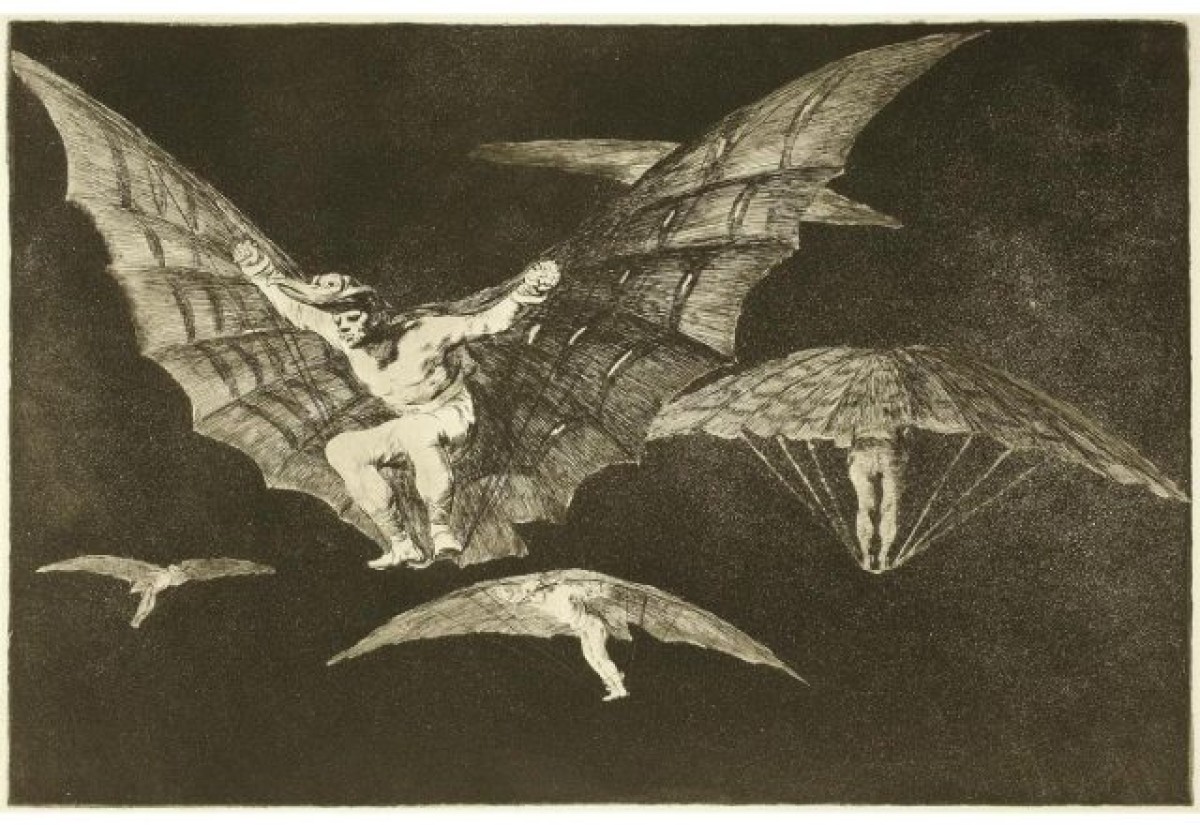The gruesomeness of Goya

Some of the most haunting images inside Guillermo del Toro: At Home with Monsters come from an 18th century Spanish painter named Francisco de Goya, who was famous for channelling the horrors of war and political upheaval into his paintings and etchings.
Goya lived through a period of unprecedented political change, including the Napoleonic invasion of Spain and the reign of Joseph Bonaparte, followed by the rise of ultraconservative monarch, Fernando VII. As an artist in service to the Spanish court, Goya reacted to the movements he witnessed in his five series of etchings, created from 1778 to 1820, which will be the subject of a talk by scholar Janis Tomlinson at the AGO. The Prints of Francisco Goya: Etching Enlightenment’s Demise will be presented on November 15 at 7 pm.
Francisco de Goya, Funereal folly (Disparate funebre), Plate 18 from "Los Proverbios", ca. 1819–1824. Etching, aquatint, lavis, burnisher, drypoint and burin on paper, 24.2 x 35.1 cm. Gift of The Robert Tanenbaum Family Trust, 1999.
Intrigued? Here are five strange facts (or rumours) about Goya’s life:
- Goya moved from Madrid to Rome in the late 1760s, and there are many rumours from that time in his life, including: travelling to Rome with a gang of bullfighters, working as an acrobat or for a Russian diplomat, or falling in love with a nun who lived at a convent and plotting to woo her away.
- La Maja Desnuda, a painting of a nude woman reclined on chaise, is considered to be the first life-size female nude in Western art without an allegorical or mythological meaning – not to mention the first to show pubic hair without any negative correlation (as a prostitute, for instance). He painted a companion piece with the woman clothed, La Maja Vestida, which usually hangs next to the nude version in the Prado Museum in Madrid.
- Goya was charged with moral depravity by the Spanish Inquisition in the early 1800s, narrowly escaping prosecution.
- In the early 1790s, Goya contracted an unknown illness that left him deaf, which made him paranoid of mortality and madness. Though successful in the city, he withdrew from society in his later years, retreating to La Quinta del Sordo or The House of the Deaf Man.
- At 75, he painted 14 Black Paintings on the walls of La Quinta del Sordo—arguably his most infamous, horrific and macabre works—including Saturno devorando a un hijo (Saturn Devouring His Son). So few people knew about them that it wasn’t until 50 years after his death that the paintings were taken down and transferred to canvas. They’re currently on display at the Prado Museum in Madrid.
Learn more about Goya at The Prints of Francisco Goya: Etching Enlightenment’s Demise on November 15 – tickets are on sale now.
Are you an AGOinsider yet? If not, sign up to have stories like these delivered straight to your inbox every week.

